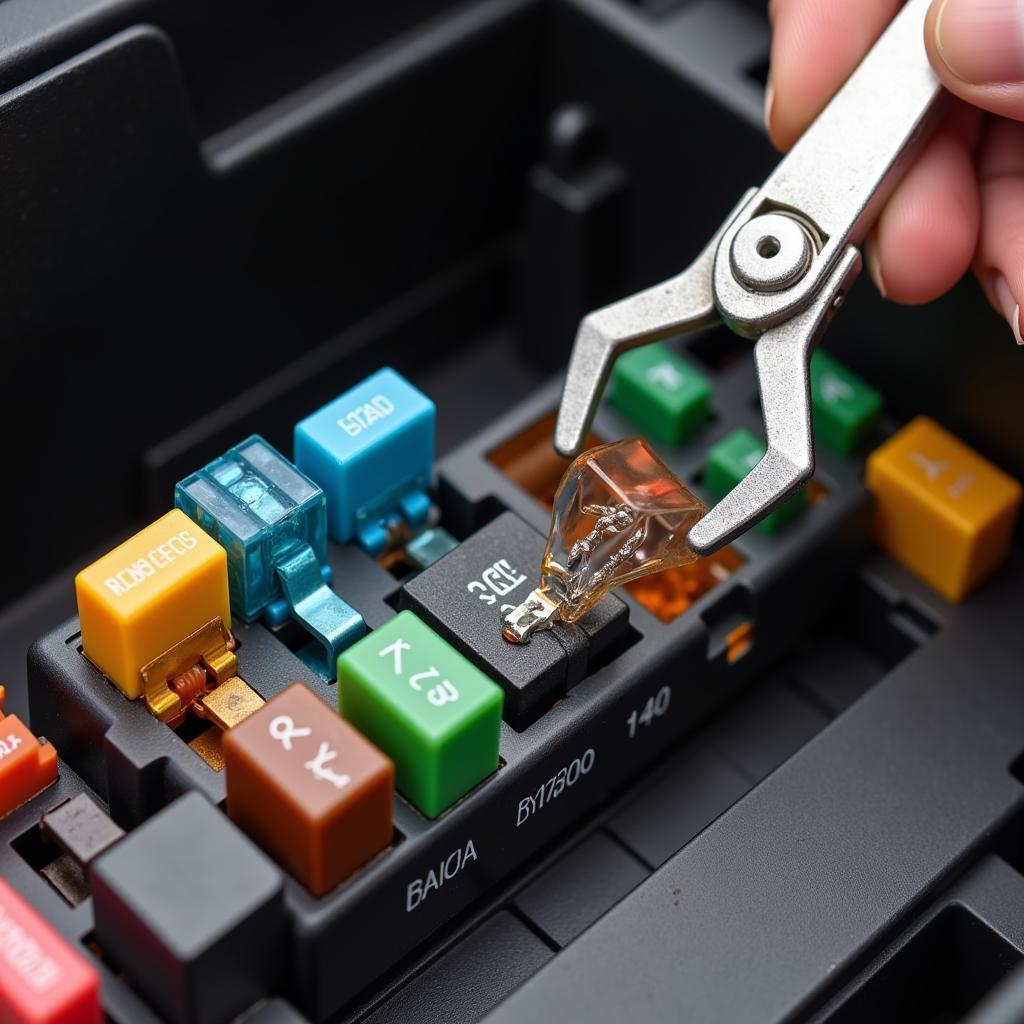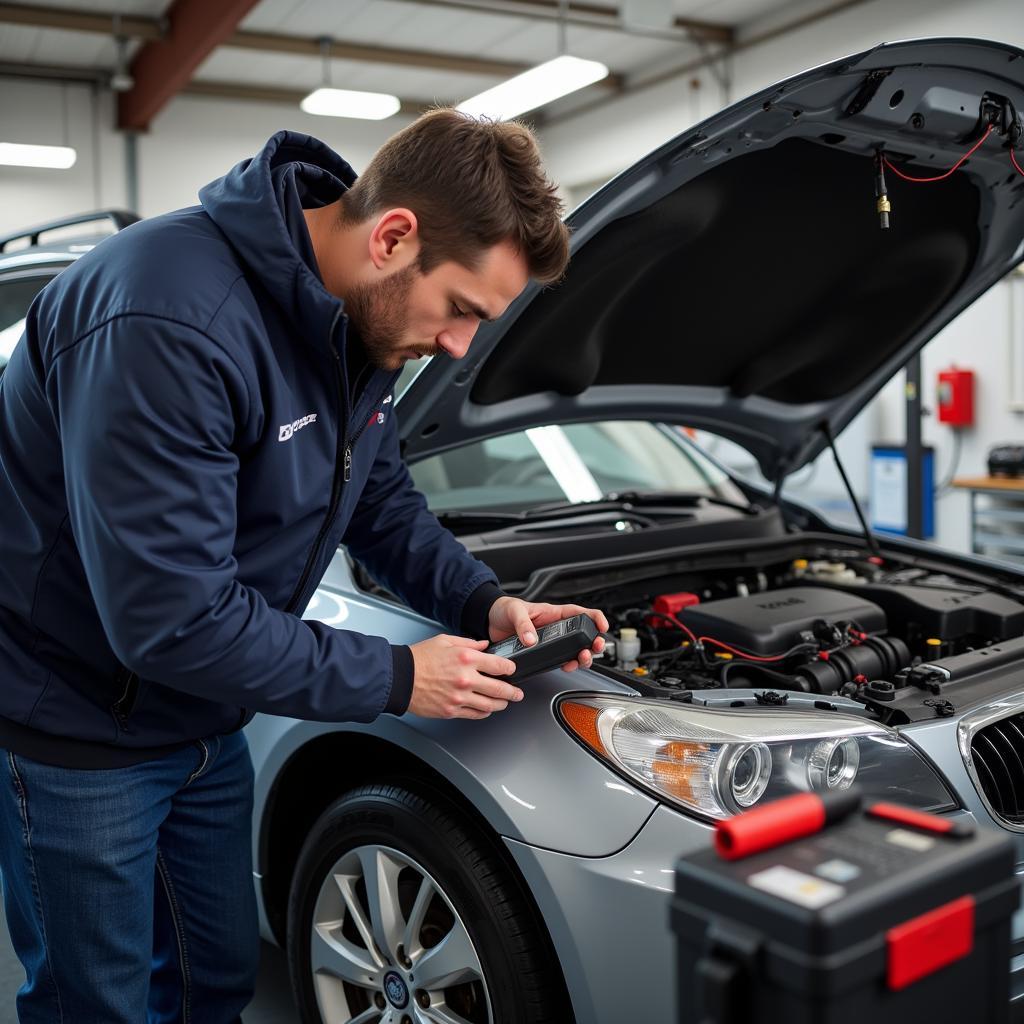Troubleshooting electrical issues in your car can be frustrating. From a flickering headlight to a complete engine failure, electrical problems manifest in countless ways, leaving you stranded or with a hefty repair bill. This guide will equip you with the knowledge and steps to diagnose and potentially fix those electrical gremlins yourself.
If you’re experiencing issues with your car antenna, check this helpful resource: 2003 lincoln town car antenna problems.
Common Electrical Problems in Cars
A car’s electrical system is complex, with numerous components working together. Identifying the source of the problem requires a systematic approach. Common culprits include the battery, alternator, starter, fuses, relays, wiring, and various sensors. Symptoms range from dimming lights and slow cranking to complete electrical system failure.
How to Diagnose an Electrical Problem in a Car
Diagnosing an electrical problem often feels like searching for a needle in a haystack. However, by following a logical process, you can narrow down the possibilities.
Check the Battery
First, check the battery terminals for corrosion. Clean them with a wire brush and baking soda solution if necessary. Test the battery voltage using a multimeter. A fully charged battery should read around 12.6 volts. If the voltage is significantly lower, the battery might need replacing or charging.
Inspect the Alternator
The alternator charges the battery and powers the electrical system while the engine is running. A failing alternator can lead to a dead battery and various electrical issues. You can test the alternator output voltage with the engine running. It should be around 13.5-14.5 volts.
Test Fuses and Relays
Fuses and relays protect the electrical circuits from overloads. Check the fuse box for blown fuses, identified by a broken filament. Relays can be tested using a multimeter or by swapping them with a known good relay.
 Inspecting car fuses for damage
Inspecting car fuses for damage
If you’ve had electrical problems with your 2004 Lincoln Town Car, this might be helpful: 2004 lincoln town car electrical problems.
Examine the Wiring
Look for damaged, corroded, or loose wiring. Wiring harnesses can rub against other components, causing shorts or open circuits.
How to Fix Simple Electrical Problems
Some electrical problems have simple solutions. For instance, a blown fuse is easily replaced. Cleaning corroded battery terminals can restore proper electrical function. Tightening loose connections can resolve intermittent issues.
What if the problem persists?
If the problem is more complex, such as a faulty alternator or a wiring harness issue, professional help might be necessary. However, understanding the basic diagnostic steps can save you time and money.
When to Seek Professional Help
While DIY repairs are rewarding, some electrical problems require specialized tools and expertise. If you encounter complex issues, such as intermittent faults or issues with electronic control modules (ECMs), it’s best to consult a qualified automotive electrician.
 Professional automotive electrician diagnosing car electrical system
Professional automotive electrician diagnosing car electrical system
Having low volume issues with your car speakers? Check this out: car speaker low volume problem.
Preventing Electrical Problems in Your Car
Regular maintenance can prevent many electrical problems. Keep the battery terminals clean, inspect the wiring periodically, and address any minor issues promptly before they escalate.
“Preventive maintenance is key to a healthy electrical system. Regular checks can save you from headaches down the road,” says John Smith, Automotive Electrical Engineer at Acme Automotive Solutions.
Conclusion: How do you fix an electrical problem in a car?
Fixing an electrical problem in a car requires systematic troubleshooting. Start with the basics like the battery, alternator, and fuses. Remember, safety first! Disconnect the battery negative terminal before working on any electrical components. If the problem persists, seek professional help. Contact us at AutoTipPro at +1 (641) 206-8880 or visit our office at 500 N St Mary’s St, San Antonio, TX 78205, United States, for expert assistance with your car’s electrical system.
For a deeper dive into major car maintenance problems, visit this link: car maintenance major problems.
If you’re having trouble with your Club Car V-Glide, this might be useful: club car v glide problems.
FAQs
- How can I tell if my car battery is bad? Signs include slow cranking, dimming lights, and clicking sounds when turning the key.
- What causes a car alternator to fail? Common causes include worn brushes, faulty diodes, and bearing failure.
- How often should I check my car’s fuses? It’s a good idea to check them whenever you experience an electrical issue.
- Can I jump-start a car with a completely dead battery? Yes, but it might take longer to charge enough to start the engine.
- What is a car relay? A relay is an electrically operated switch that controls high-current circuits.
- Why are my car’s headlights dim? Possible causes include a weak battery, a failing alternator, or poor ground connections.
- What should I do if my car’s electrical system completely shuts down? Check the battery connections and fuses first. If the problem persists, seek professional help.




Leave a Reply